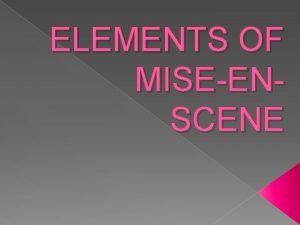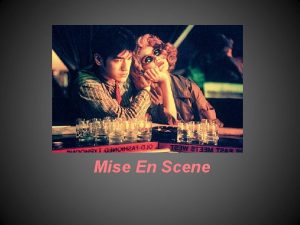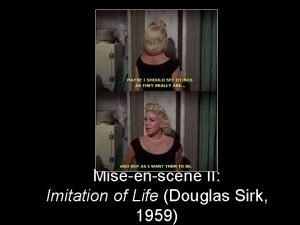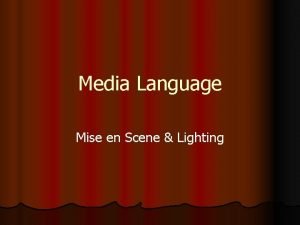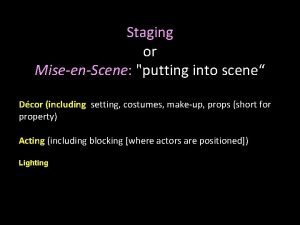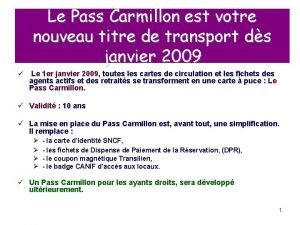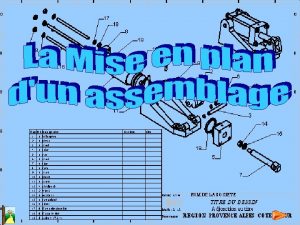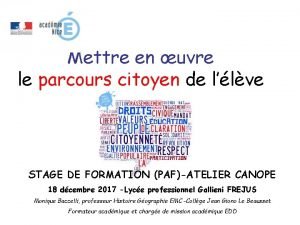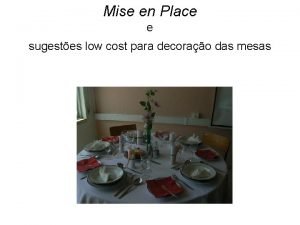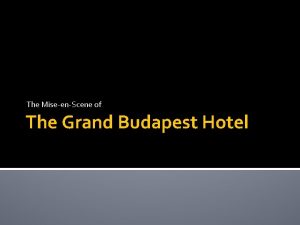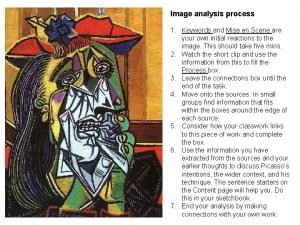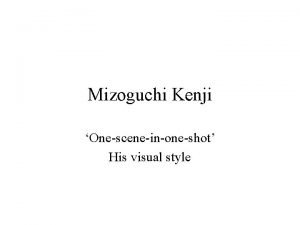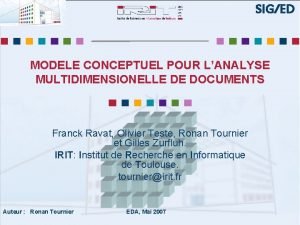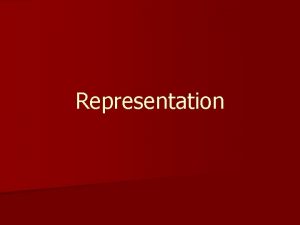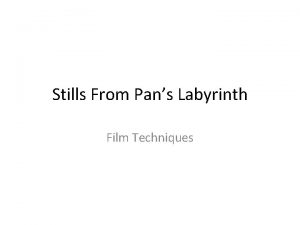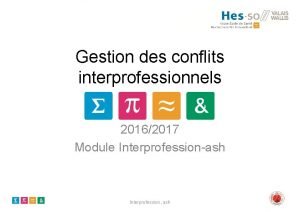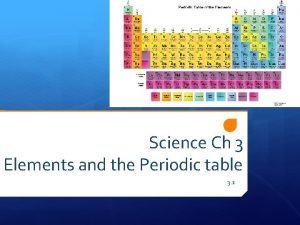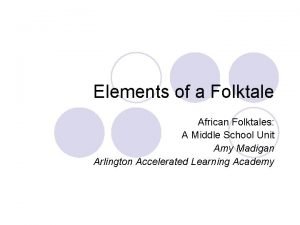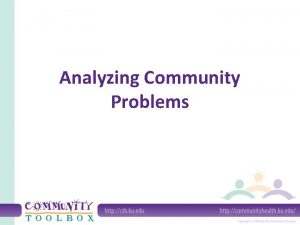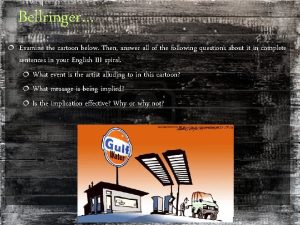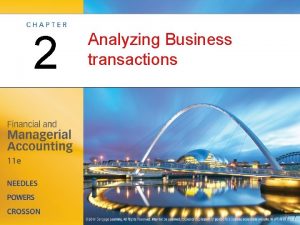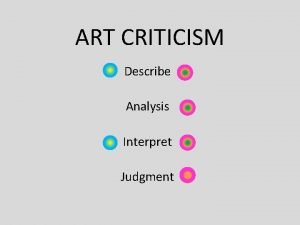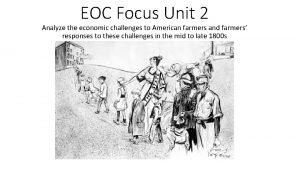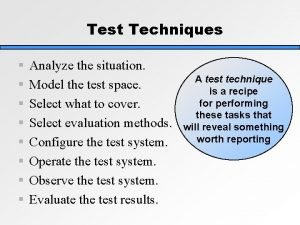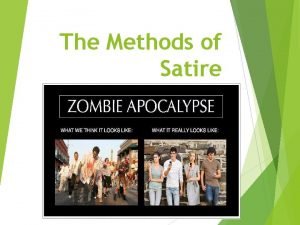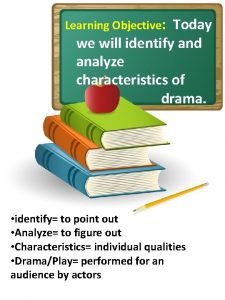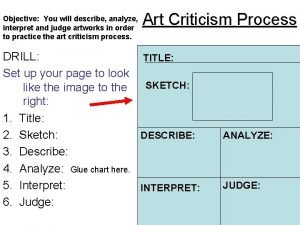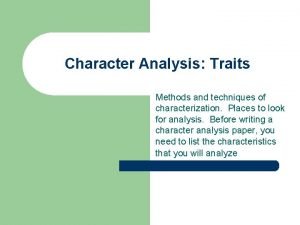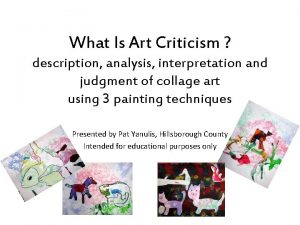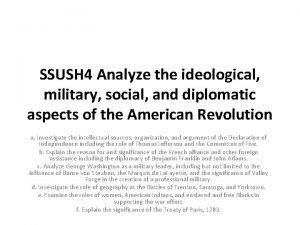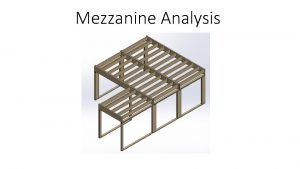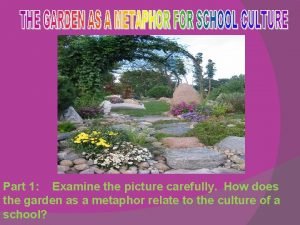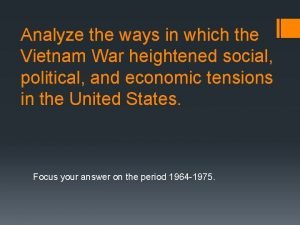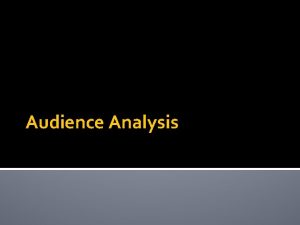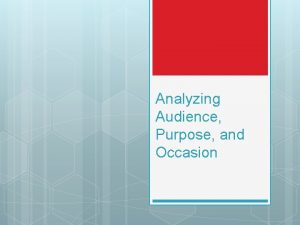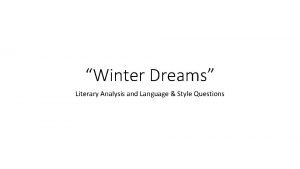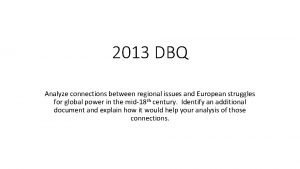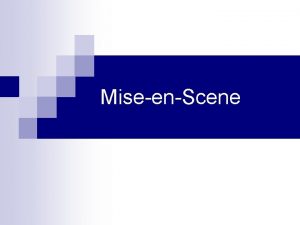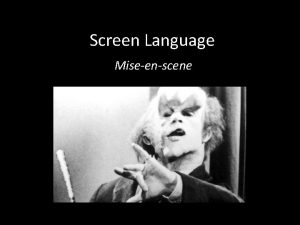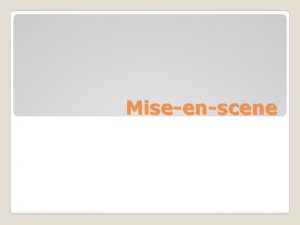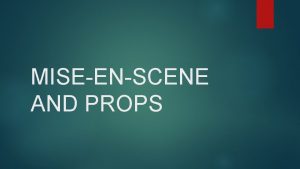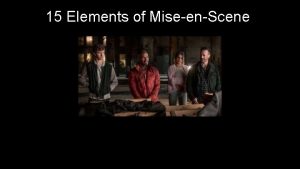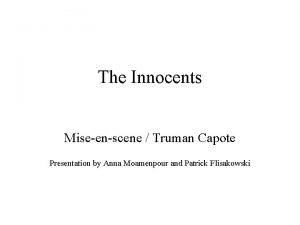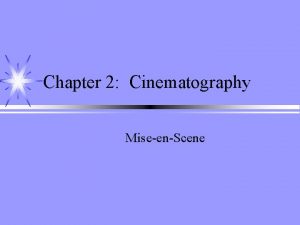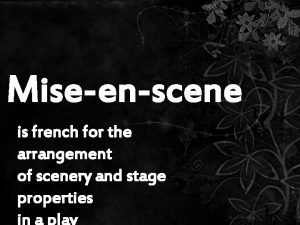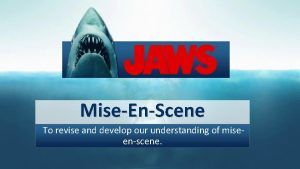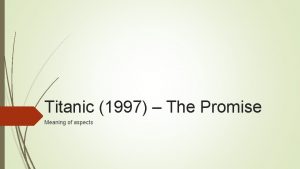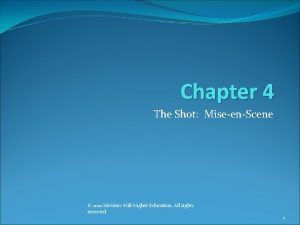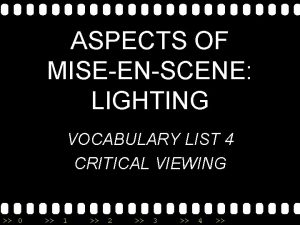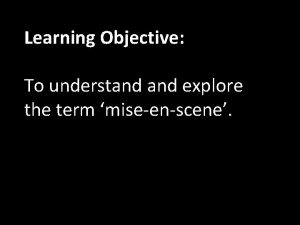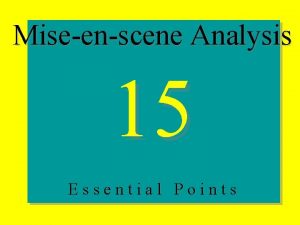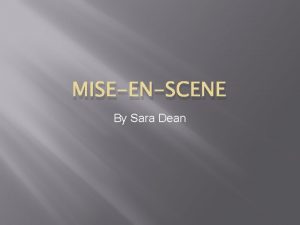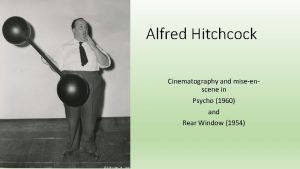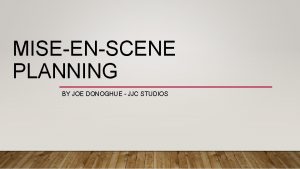15 Elements to analyze miseenscene Systematic Mise en



























































- Slides: 59

15 Elements to analyze mise-enscene

Systematic Mise en Scene Analysis 15 pt. Systematic Mise-en-Scène Analysis 1. Dominant. What is our eye attracted to? “Photographic considerations” 2. Lighting Key: High-key, low-key, combo? 3. Shot and Camera Proxemics: What type of shot? How far away? 4. Shot Angles. High, low, neutral. 5. Colour values. What is dominent colour? Colour symbolism? 6. Lens/filter/stock. How do these distort or comment on photography? 7. Subsidiary contrasts. What are the eye-stops after the dominant? 8. Density. How much visual information is packed into the image? Is texture stark, moderate, or highly detailed? Continued next screen

Continued … Systematic Mise en Scene Analysis 15 pt. Systematic Mise-en-scène Analysis 9. Composition. How is the 2 -D space segmented and organized? What is the underlying design? 10. Form. Open or closed? Does the image suggest a window that arbitrarily isolates a fragment of the scene? Or is it self contained? 11. Framing. Tight or loose? How much room do the characters have to move around? 12. Depth. On how many planes is the image composed? Does the background and foreground comment on the midground? 13. Character placement. What parts of the framed space are occupied? 14. Staging positions. Which way to they look vis-à-vis the camera 15. Character proxemics. How much space between characters?

Mise en Scene The Frame and Aspect Ratio “The frame” functions as the basis of composition in a movie image. 4: 3 (1. 33: 1) is the standard TV aspect ratio we have been used to for the past 50 odd years. 4 is the horizontal and 3 the vertical, of course. The problem with 4: 3 is that it doesn't reflect our natural vision. Humans have better lateral vision than vertical. In effect, our vision is widescreen, therefore widescreen TV and film seems naturally more appealing to us.

Considerations of Mise en Scene The Frame and Aspect Ratio Widescreen refers to any aspect ratio wider than 4: 3 (1. 33: 1). 1. 85: 1 - The original widescreen film format developed in the 1950 s to help cinema compete with TV. This is still a popular format. 2. 35: 1 - (also known as. . . Anamorphic Scope, Cinema. Scope, Panovision) is not as old as 1. 85: 1. This aspect ratio involves filming with a special anamorphic lens fitted to the camera to squeeze the image horizontally onto the film. A similar lens fitted to a cinema projector un-squeezes them during projection to the 2. 35: 1 ratio. Widescreen TVs typically have a screen aspect ration of 16: 9 (1. 78: 1) which is narrower than both cinematic widescreen standards (1. 85: 1, 2. 35: 1).

The Setting, a systematic analysis 1. Exterior or interior? If an exterior, how does nature play a role? 2. Style? Realistic and lifelike? Or stylized and distorted? 3. Studio or Location? If location, what does it say about the characters? 4. Period? What era does the set represent. 5. Class. What is apparent income level? 6. Size? Rich people lots of space. Poor people cramped. 7. Set decoration. Oddities of taste? Status symbols? 8. Symbolic Functions. What kind of overall image does the set and its furnishings project?

Film Aesthetics Movement -- Kinetics “Motion Picture” suggests the central importance of motion in the art of film. In kinetic arts -- pantomime ballet, modern dance -- we find a wide variety of movements ranging from realistic to abstract (formalistic). Eg Clint Eastwood vs Gene Kelly. Kinetic symbolism is a filmmaker’s way to exploit meanings in certain types of movement. Eg. Ecstacy and joy often expressed by expansive movements, eroticism with undulating motions.

Dominant • Where is our eye attracted first? Why? • The dominant contrast can be created by any number of techniques. The size of an object may draw our attention to it. In black and white movies, the dominant contrast is generally achieved through a juxtaposition of lights and darks. In color films, the dominant is often achieved by having one color stand out from the others. Placing one object in sharper focus than the rest of the shot can also create a dominant.


• The dominant in this shot from the film Ghost World is the character of Enid, played by Thora Birch. The dominant is created by: – Size. She's one of the two largest objects in the shot. – Focus. She's one of the two objects in focus. – Lighting. Unlike Seymour (Steve Buscemi), who's also large and in focus, Enid is highlighted by a shaft of light. – Color. Enid wears a bright blue top while the rest of the shot is composed of variations of brown.

Lighting Key • High key? Low key? High contrast? Some combination of these? • High key lighting--features bright, even illumination and few conspicuous shadows. This lighting key is often used in musicals and comedies. • Low key lighting--features diffused shadows and atmospheric pools of light. This lighting key is often used in mysteries and thrillers. • High contrast lighting--features harsh shafts of lights and dramatic streaks of blackness. This type of lighting is often used in tragedies and melodramas.


• The lighting key in this shot is moderate. The scene is not brightly lit, but there isn't a lot of shadows either. Also, there isn't a great contrast between lights and darks in the shot. Moderate lighting fits the genre, a characterbased comedy/drama. It's not as bright as a light comedy, as dark as a thriller, or as dramatic as a tragedy or melodrama. •

Shot and Camera Proxemics • What type of shot? How far away is the camera from the action? • Shots are defined by the amount of subject matter that's included within the frame. They can be divided into six basic categories: • Extreme long shot--taken from a great distance, showing much of the locale. If people are included in these shots, they usually appear as mere specks. • Long shot--corresponds to the space between the audience and the stage in a live theater. The long shots show the characters and some of the locale. • Full shot--range with just enough space to contain the human body in full. The full shot shows the character and a minimal amount of the locale.

• Medium shot--shows the human figure from the knees or waist up. • Close-up--concentrates on a relatively small object and show very little if any locale. • Extreme close-up--focuses on an unnaturally small portion of an object, giving that part great detail and symbolic significance.


• This shot is a medium shot. The two characters are shown from the thighs up

Camera Angle • Are we (and the camera) looking up or down on the subject? Or is the camera neutral (eye level)? • There are five basic angles in film. – Bird's-eye view--the shot is photographed directly from above. This type of shot can be disorienting, and the people photographed seem insignificant. – High angle--this angle reduces the size of the objects photographed. A person photographed from this angle seems harmless and insignificant, but to a lesser extent than with the bird's-eye view.

– Eye-level shot--the clearest view of an object, but seldom intrinsically dramatic, because it tends to be the norm. – Low angle--this angle increases high and a sense of verticality, heightening the importance of the object photographed. A person shot from this angle is given a sense of power and respect. – Oblique angle--for this angle, the camera is tilted laterally, giving the image a slanted appearance. Oblique angles suggest tension, transition, a impending movement. They are also called canted or dutch angles.


• This shot is eye-level. The scene is not highly dramatic and no power relationship is being suggested between the two characters.

Color Values • What is the dominant color? Are there contrasting foils? Is there color symbolism? • The use of color in this shot is symbolic. The scene is set in Seymour's kitchen. Seymour's apartment, like Seymour himself, is very drab. Both the set and Seymour are dressed in browns. • Enid, on the other hand, is dressed in bright blue. She is not only a contrasting foil for Seymour and the shot, but she will metaphorically add some "color" to his life.


• The use of color in this shot is symbolic. The scene is set in Seymour's kitchen. Seymour's apartment, like Seymour himself, is very drab. Both the set and Seymour are dressed in browns. • Enid, on the other hand, is dressed in bright blue. She is not only a contrasting foil for Seymour and the shot, but she will metaphorically add some "color" to his life.

Lens/Filter/Stock • How do these distort or comment on the photographed materials? • Common lenses and stocks: • Telephoto lens--A lens that draws objects closer but also diminishes the illusion of depth. • Wide-angle lens--A lens that takes in a broad area and increases the illusion of depth but sometimes distorts the edges of the image.

• Fast film stock--highly sensitive to light, it can register an image with little illumination. However, the final product tends to be grainy. • Slow film stock--relatively insensitive to light, it requires a great deal of illumination. The final product tends to look polished


• The lens is not wide-angle because there isn't a great sense of depth, nor are several planes in focus. The lens is probably long but not necessarily a telephoto lens because the depth isn't inordinately compressed. • The stock is slow because of the high quality of the image.

Subsidiary Contrasts • After taking in the dominant, where does the eye go next? What are the other main objects in the shot besides the dominant?


• The main subsidiary contrast in this shot is Seymour. He doesn't stand out as much as Enid because his clothes blend in with the background and he doesn't have as much light on him as she does. However, his size is significant, and he's in focus. The other subsidiary contrast is the box in front of the couple. It's the only other object in focus.

Density • How much visual information is packed into the image? Is the texture stark, moderate, or highly detailed? • Although there a lot of objects in the background, the image is not very dense because the focus limits the viewer to taking in only three main objects: Enid, Seymour, and the box in front of them.


• Although there a lot of objects in the background, the image is not very dense because the focus limits the viewer to taking in only three main objects: Enid, Seymour, and the box in front of them.

Composition • How is the two-dimensional space segmented and organized? What is the underlying design? • The objects in the frame can be placed to suggest underlying designs or shapes. • Horizontal--compositions based on horizontal lines seem visually at rest and suggest placidity or peacefulness. • Vertical--compositions based on vertical lines seem visually at rest and suggest strength.

• Diagonal--compositions based on diagonal, or oblique, lines seem dynamic and suggest tension or anxiety. • Binary--binary structures emphasize parallelism. • Triangle--triadic compositions stress the dynamic interplay among three main elements. • Circle--circular compositions suggest security and enclosure.


• This shot has a binary composition. The two characters are facing each other, standing in almost the same position. Their standing also gives the shot a strong vertical sense.

Form • Is the form open or closed? Does the image suggest a window that arbitrarily isolates a fragment of the scene? Or a proscenium arch, in which the visual elements are carefully arranged and held in balance? • The most nebulous of all the categories of mise en scene, the type of form is determined by how consciously structured the mise en scene is. Open forms stress apparently simple techniques, because with these unself-conscious methods the filmmaker is able to emphasize the immediate, the familiar, the intimate aspects of reality

• . In open-form images, the frame tends to be deemphasized. In closed form images, all the necessary information is carefully structured within the confines of the frame. Space seems enclosed and self-contained rather than continuous.


• The form of this shot is open. The shot doesn't seem highly composed. The shot is natural, simple, and unstructured, as if it's a window arbitrarily cutting off a portion of the scene. All the necessary information is not contained in the one shot, as we see by the third character cut off by the right edge of the frame. •

Framing • Is the framing tight or loose? Do the character have no room to move around, or can they move freely without impediments? • Shots where the characters are placed at the edges of the frame and have little room to move around within the frame are considered tight. • Longer shots, in which characters have room to move around within the frame, are considered loose and tend to suggest freedom.


• The framing in this shot is moderately loose. There seems to be a whole body width between the characters and the edges of the frame.

Depth of Field • On how many planes is the image composed (how many are in focus)? Does the background or foreground comment in any way on the mid-ground? • Deep-focus shots allow all planes to be in focus at the same time. More commonly, only one or two frames are in focus.


• This shot is shallow. Only one plane is in focus, isolating the characters from what is going on in the rest of the scene.

Character Placement • What part of the framed space do the characters occupy? Center? Top? Bottom? Edges? Why? • The area near the top of the frame can suggest ideas dealing with power, authority, and aspiration. • The areas near the bottom of the frame tend to suggest meanings opposite from the top: subservience, vulnerability, and powerlessness. • The left and right edges of the frame tend to suggest insignificance because these are the areas farthest removed from the center of the screen.


• The characters are centered in the frame. They are the important objects in this character-focused drama.

Staging Positions • Which way do the characters look vis-a-vis the camera? • An actor can be photographed in any of five basic positions, each conveying different psychological overtones. – Full-front (facing the camera): the position with the most intimacy. The character is looking in our direction, inviting our complicity. – Quarter Turn: the favored position of most filmmakers. This position offers a high degree of intimacy but with less emotional involvement than the full-front position.

• Profile (looking of the frame left or right): More remote than the quarter turn, the character in profile seems unaware of being observed, lost in his or her own thoughts. • Three-quarter Turn: More anonymous than the profile, this position is useful for conveying a character's unfriendly or antisocial feelings, for in effect, the character is partially turning his or her back on us, rejecting our interest. • Back to Camera: The most anonymous of all positions, this position is often used to suggest a character's alienation from the world. When a character has his or her back to the camera, we can only guess what's taking place internally, conveying a sense of concealment, or mystery.


• Both characters are shown in profile. The characters are focused on each other, not the outside world.

Character Proxemics • How much space is there between the characters? • The way people use space can be divided into four proxemic patterns. – Intimate distances: the intimate distance ranges from skin contact to about eighteen inches away. This is the distance of physical involvement--of love, comfort, and tenderness between individuals. – Personal distances: the personal distance ranges roughly from eighteen inches away to about four feet away. These distances tend to be reserved for friends and acquaintances. Personal distances preserve the privacy between individuals, yet these rages don't necessarily suggest exclusion, as intimate distances often do.

• Social distances: the social distance rages from four feet to about twelve feet. These distances are usually reserved for impersonal business and casual social gatherings. It's a friendly range in most cases, yet somewhat more formal than the personal distance. • Public distances: The public distance extends from twelve feet to twenty-five feet or more. This range tends to be formal and rather detached.


• The distance in this shot is intimate, showing that the characters are good friends and are comfortable with each other at this point in the movie.
 Mise en scene props
Mise en scene props Definition of mise en scene
Definition of mise en scene Gerli sirk
Gerli sirk Mise en scene lighting
Mise en scene lighting Claudia antičević
Claudia antičević Mise en scene staging
Mise en scene staging Mise en place checklist
Mise en place checklist Pass carmillion
Pass carmillion Mise en plan
Mise en plan Intranet mise lavoro agile
Intranet mise lavoro agile Batardeau
Batardeau Parcours citoyen exemple
Parcours citoyen exemple Mise en place mesa
Mise en place mesa Mise en scene grand budapest hotel
Mise en scene grand budapest hotel Mise en place checklist
Mise en place checklist Mise en image
Mise en image Mise en scene
Mise en scene Multidimensionelle
Multidimensionelle Mise en abyme
Mise en abyme Proxemic patterns in film
Proxemic patterns in film Mise en contexte exemple
Mise en contexte exemple 3 sandwiches
3 sandwiches Http //elements.wlonk.com/elements table.htm
Http //elements.wlonk.com/elements table.htm What are elements of drama
What are elements of drama What is folktale in literature
What is folktale in literature Elements and sub elements
Elements and sub elements What are the elements of a folktale
What are the elements of a folktale Atomic elements vs molecular elements
Atomic elements vs molecular elements Identified community problem
Identified community problem Levels of diction
Levels of diction Analyze the cartoon below then provide
Analyze the cartoon below then provide Analysis of business transaction
Analysis of business transaction Find-fix-finish-exploit-analyze targeting model
Find-fix-finish-exploit-analyze targeting model Anticipation guide examples
Anticipation guide examples Description analysis interpretation judgement
Description analysis interpretation judgement Analyze
Analyze Analyze a situation
Analyze a situation Identify and analyze
Identify and analyze Analyze this picture
Analyze this picture How to analyze a play
How to analyze a play Analyzing diction
Analyzing diction A debit is on the ______ side of the account.
A debit is on the ______ side of the account. Analyze
Analyze How to analyze algorithm
How to analyze algorithm Analyze this picture
Analyze this picture 認知領域
認知領域 Describe identify interpret judge
Describe identify interpret judge How to analyze characterization
How to analyze characterization Describe analysis
Describe analysis Ssush4 analyze the ideological military
Ssush4 analyze the ideological military Analyze
Analyze Examine the picture carefully and answer the question
Examine the picture carefully and answer the question Examples of impression evidence
Examples of impression evidence Analyze the ways in which the vietnam war heightened social
Analyze the ways in which the vietnam war heightened social Affective behavior at the level of valuing
Affective behavior at the level of valuing How do you analyze your audience
How do you analyze your audience How do you analyze an occasion
How do you analyze an occasion Winter dreams analysis
Winter dreams analysis Analyze connections between regional issues
Analyze connections between regional issues Analyze phase - includes
Analyze phase - includes
